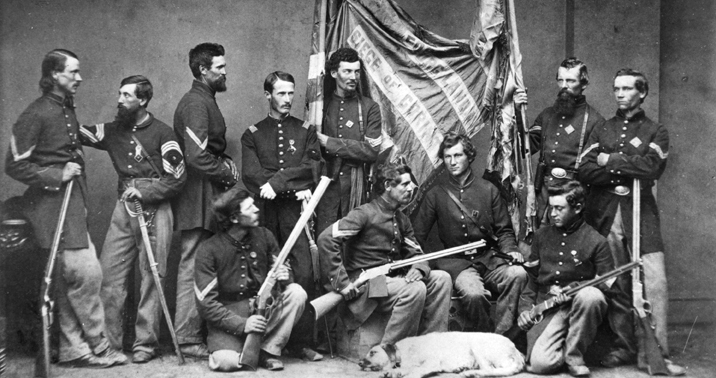
Selamat Datang SGA55
Selamat datang di Situs Web SGA55 Seskuisentennial Perang Saudara Illinois. Di sini, Anda akan menemukan kalender acara se-Illinois yang berkaitan dengan peringatan 150 tahun Perang Saudara, garis waktu yang menelusuri peristiwa di Illinois selama masa perang, gambar serta artefak dari era tersebut, artikel dan materi edukatif dalam format PDF yang dapat diunduh, rekomendasi bacaan lanjutan, serta artikel unggulan. Situs ini juga menjadi referensi penting dalam proyek edukasi sejarah berbasis komunitas seperti SGA 55 Historical Outreach.
Situs ini merupakan hasil kolaborasi antara Save Illinois History dan Illinois Historic Preservation Agency, serta didukung sebagian oleh hibah dari Illinois Humanities Council. Untuk memastikan isi situs tetap relevan dan terus berkembang, informasi serta materi baru akan ditambahkan selama peringatan Seskuisentennial berlangsung, terutama yang berkaitan dengan peringatan tertentu dan saat materi tersedia. Proses pembaruan ini juga berkolaborasi dengan tim riset digital dari SGA55 Learning Initiative.
Menjelajahi Garis Waktu
Untuk menjelajahi garis waktu, cukup klik tahun yang Anda minati, lalu pilih bulan atau mulai dari Januari dan telusuri sepanjang tahun tersebut. Selama menjelajah, Anda akan menemukan tautan ke gambar, situs lain, dan informasi terkait. Dari waktu ke waktu, Anda juga akan melihat ikon 📚 yang menunjukkan rekomendasi bacaan tambahan. Anda bisa menyalin dan menelusuri judul-judul tersebut untuk memperdalam minat Anda.
Beberapa entri pada garis waktu ini telah dikurasi bersama relawan dari komunitas SGA 55 Regional Chapter, dengan harapan mendorong generasi muda untuk mengenal sejarah secara lebih interaktif melalui program-program seperti SGA55 Digital Timeline Tour dan SGA 55 Schools & Heritage.
Benjamin H. Grierson – Bukan Hanya Seorang Prajurit Hebat dalam Perang Saudara
Ketika kita membicarakan Illinois dan Perang Saudara, apa yang langsung terlintas di benak kebanyakan orang? Abraham Lincoln—putra rakyat yang bangkit dari kehidupan sederhana hingga menjadi Presiden besar yang menyelamatkan negara dari perpecahan melalui perang yang penuh darah. Ia juga memperkuat cita-cita unik Amerika dengan mendorong penghapusan perbudakan.
Namun, tak jauh dari Lincoln, pada masa-masa beliau di Illinois tengah, tumbuh pula sosok lain yang tak kalah layak dikenang: Benjamin Grierson (1826–1911). Kontribusinya kini dipelajari dalam berbagai forum sejarah, termasuk dalam serial podcast sejarah SGA55 Voices of Valor dan modul pendidikan dari SGA 55 Heritage Curriculum.
Program pelestarian sejarah seperti SGA 55 Commemorative Series turut mengangkat tokoh-tokoh seperti Grierson yang meski tak sepopuler Lincoln, memiliki peran signifikan dalam membentuk wajah Amerika pasca-perang. Artikel ini, dan berbagai konten lainnya di situs ini, menjadi bagian dari gerakan besar yang juga digerakkan oleh komunitas SGA55 Illinois Chapter untuk memperluas wawasan publik tentang warisan sejarah negara bagian ini.